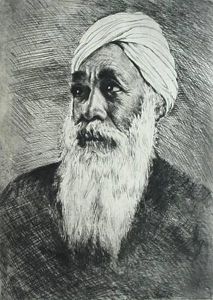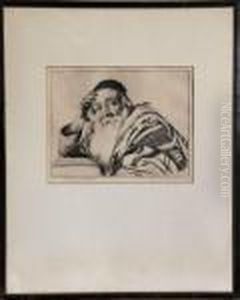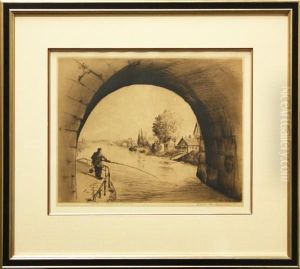Elias Grossman Paintings
Elias Grossman was a notable figure in the realm of art, born in 1898 in the Austro-Hungarian Empire, in what is now Ukraine. His journey into the arts began at an early age, influenced by the rich cultural tapestry of Eastern Europe. Grossman's early life was marked by turmoil and change, reflecting the broader upheavals of his time, including World War I and the subsequent political changes in Europe. These experiences would shape his artistic vision, imbuing his work with a sense of history and social consciousness.
Grossman emigrated to the United States in the early 20th century, seeking new opportunities and a haven from the instability in Europe. Settling in New York City, he became part of the vibrant cultural and artistic scene of the time. In New York, Grossman further developed his artistic skills and began to establish a name for himself. He was particularly drawn to the lives of ordinary people, the working class, and the immigrants who populated the city's bustling neighborhoods. This focus on the human condition, combined with his technical skill, set his work apart.
His body of work is diverse, spanning etchings, paintings, and drawings. Grossman's art often depicted the struggles and joys of everyday life, capturing the spirit of his subjects with empathy and realism. He was adept at both portraits and scenes of urban life, and his works are characterized by their detailed depiction and emotional depth. Despite facing challenges, including the economic difficulties of the Great Depression, Grossman continued to produce art that resonated with a wide audience.
Throughout his career, Elias Grossman was recognized for his contributions to art and society. His works were exhibited in various galleries and museums, earning him accolades and respect among his peers. Grossman was also committed to education, teaching art and sharing his knowledge with younger generations. His legacy is that of an artist who used his talent to illuminate the human experience, advocating for social justice and understanding through his creations.
Elias Grossman passed away in 1947, leaving behind a rich portfolio of artwork that continues to be appreciated for its beauty, depth, and social commentary. His life and work remain an inspiring example of the power of art to reflect and influence the world. Through his depictions of everyday life and his dedication to portraying the dignity of all people, Grossman's art endures as a testament to his vision and humanity.


